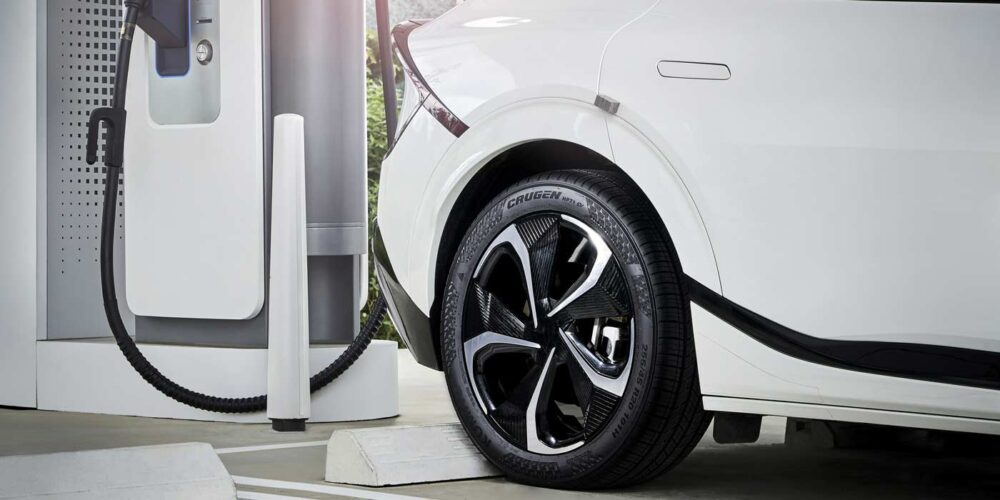With military equipment playing such a prominent role in world news recently, I thought it might be interesting to review the types of tires on military trucks and compare them to our more familiar over-the-road highway tires.
First, both tire types perform the same basic functions of supporting loads, transferring driving and braking torques, generating cornering forces, and cushioning impacts from the variety of surfaces being traversed. Military tires, however, tend to be vehicle-specific designs that incorporate mobility and damage resistance features that go beyond on/off road truck tires.
Tactical vehicles comprise the largest segment of off-road military trucks, and are generally divided into three categories: Light, Medium and Heavy.
Typical of Light category vehicles is the High Mobility Multipurpose Wheeled Vehicle (HMMWV), or "Humvee." It’s the military parent of the civilian Hummer H1. The military version is fitted with aggressive tread 37×12.50R16.5LT radial tires, and Humvees can include on-board inflation systems, allowing tire pressures to be tailored to different terrain on the fly, adding greatly to its flexibility.
In earlier days of bias ply tires (military vehicles were among the last to convert to radial, primarily because of the long vehicle life span and durable bias ply sidewalls), different tires, tailored to the theater of operation, were sometimes fitted. For example, sand tires, with wide, smooth treads having several straight circumferential grooves, were used for desert terrain.
This was necessary because a bias footprint area didn’t vary much with inflation pressure differences. Also, casing durability was often compromised when the tires were run for long distances, or at higher speeds, with low pressures.
Modern radials, on the other hand, can be designed to be very durable under much wider ranges of inflation pressures and footprint lengths. Low inflations, and corresponding longer footprints, allow radial sand tires to perform well in sand or as flotation tires when at low pressures. They can also be very durable at high speeds in over-the-road use when inflated to higher pressures.
Bead locks are also fitted to keep the tire bead and lower sidewall areas firmly seated on the wheel. This aids vehicle stability and mobility in the event of complete air loss.
The Bigger Machines
Medium tactical vehicles, such as the traditional 4×4 and 6×6 all-wheel drive transports, are typically equipped with 11.00R20, 14.00R20, or 395/85R20 tires. A majority of these are tubeless designs, even though they are fitted to flat base wheels.
This is accomplished by using two-piece wheel designs, which include sealing O-rings similar to the mounting systems used on large earthmovers. Some of these applications include supplemental run-flat devices to allow continuing mobility.
Heavy tactical vehicles include a wide array of larger trucks, tractors and specialty trailers tailored to transport specific equipment, troops and weapons systems. Popular chassis configurations are 8×8 and 10×10 (twin steer axle) all-wheel drive units with tires mounted as singles.
The most popular tire sizes for Heavy trucks is 16.00R20, most of which are tubeless designs to enhance durability, minimize downtime, and reduce required maintenance.
Be Mobile
Mobility is the word that best describes the design emphasis of tires for military vehicles. Large diameter tires are preferred for the added ground clearance afforded and the lower spring rates that help to cushion ride when operating over rough terrain. Also, wear and tear on suspension parts and other vehicle components is reduced with these higher profile tires.
Larger rolling diameters also lay down a longer footprint for better traction and flotation in soft soil or sand conditions. Tire size and load range selection usually differ for military applications since the tires must be capable of operating at low inflation pressures while maintaining a full load.
Sidewall designs are also different for many military tire applications. First, long-term weathering resistance is required to assure the tires remain ready for duty.
Secondly, extra sidewall abrasion resistance requires heavier, thicker rubber reinforcement for use on rock, debris or other adverse surfaces. This feature was a primary reason that bias tires remained popular in military applications for so long.
Newer technology and materials are now used for military radials that greatly upgrade durability and overall performance, and allow the lower spring rate (softer ride) and improved fuel efficiency provided by radials.
Service For ‘Service’ Tires
Most routine tire service required for military vehicles is performed by military personnel trained in maintenance procedures for the specific type equipment under their responsibility. There may still be instances, however, when civilian servicing tire dealers become involved.
Tube-type tires and multi-piece wheels are still common, however the military is converting to tubeless radials with two-piece wheels to reduce component parts and allow for run-flat capability. Special tires, wheels and run-flat devices may be required if replacement is needed.
Integral run-flat devices may be fitted, and these assemblies require procedures and tools different from typical highway trucks. Servicing personnel must be specially certified to change the two-piece tubeless rims and run-flat devices.
Some of these same cautions should be exercised when servicing ex-military vehicles that have entered civilian service as either work or collector vehicles. Tire and wheel makers, industry associations, and the military maintenance personnel are all good information sources should you run into these kinds of vehicles.
Modern line haul radials routinely deliver treadwear, casing durability and fuel efficiency so reliably that operators take them for granted. This is due, in part, to intense competition among major tiremakers, whose products are compared everyday in the commercial marketplace.
Military vehicles, on the other hand, may sit unused for long periods but are expected to perform to high standards on short notice.
Judging by recent events, mission accomplished.













